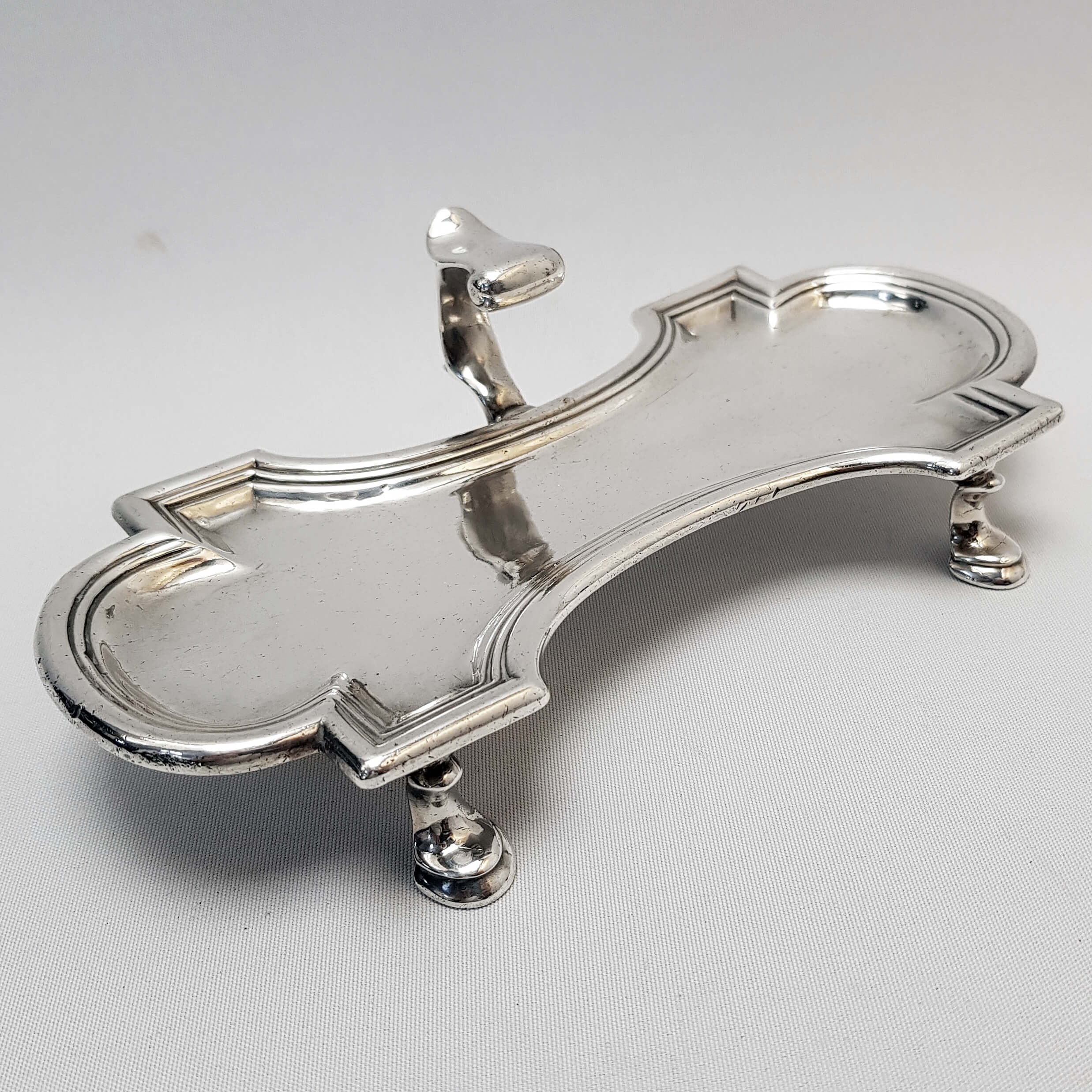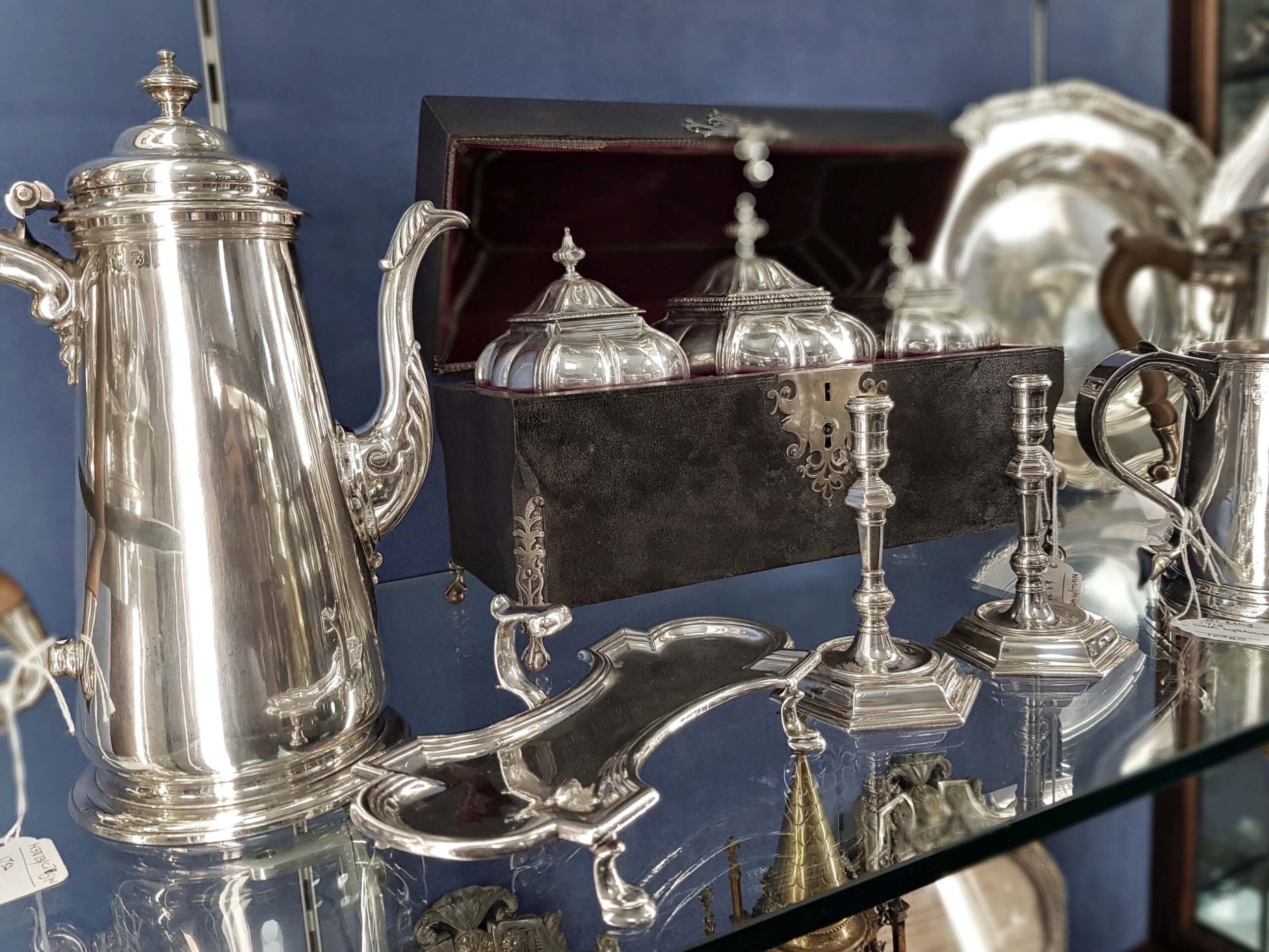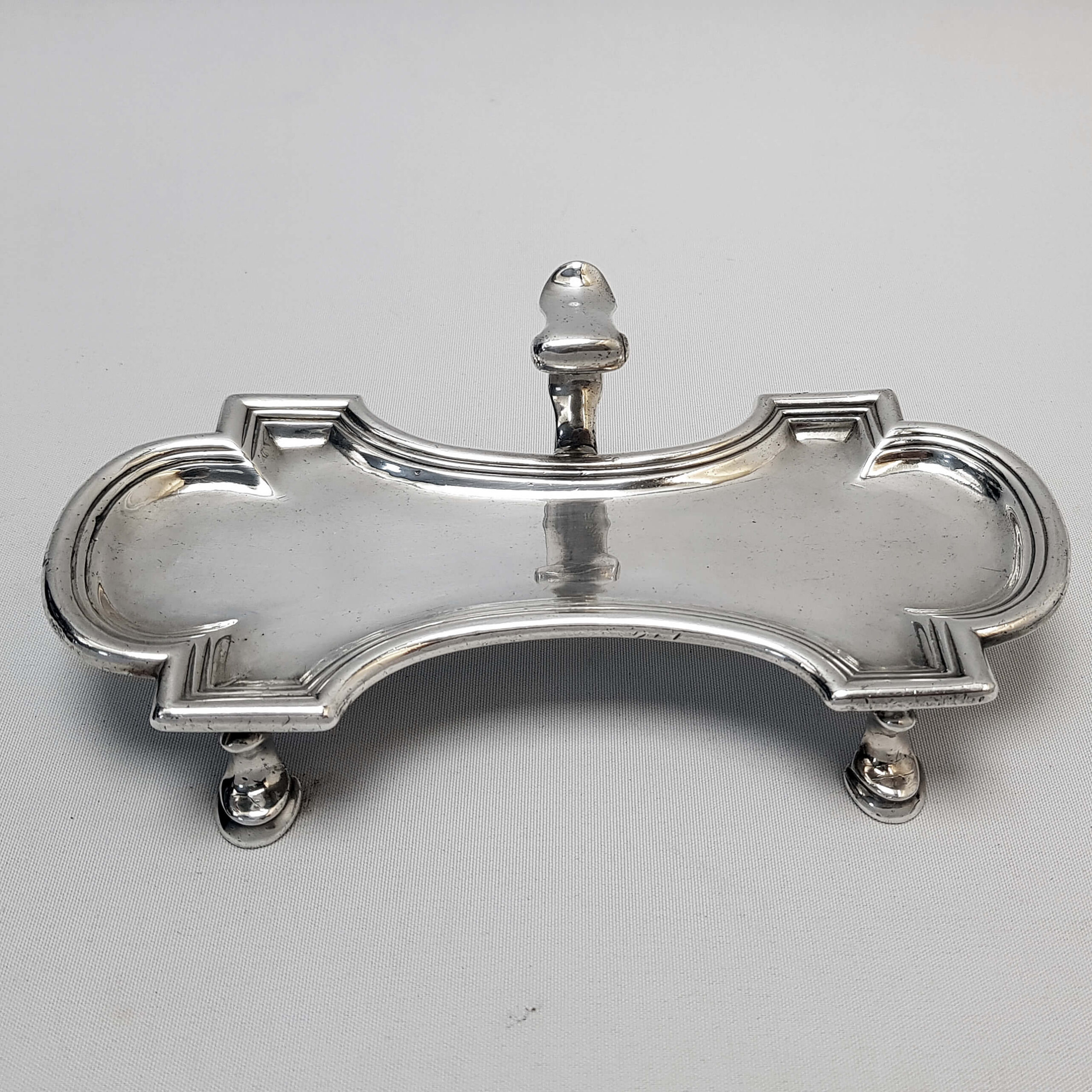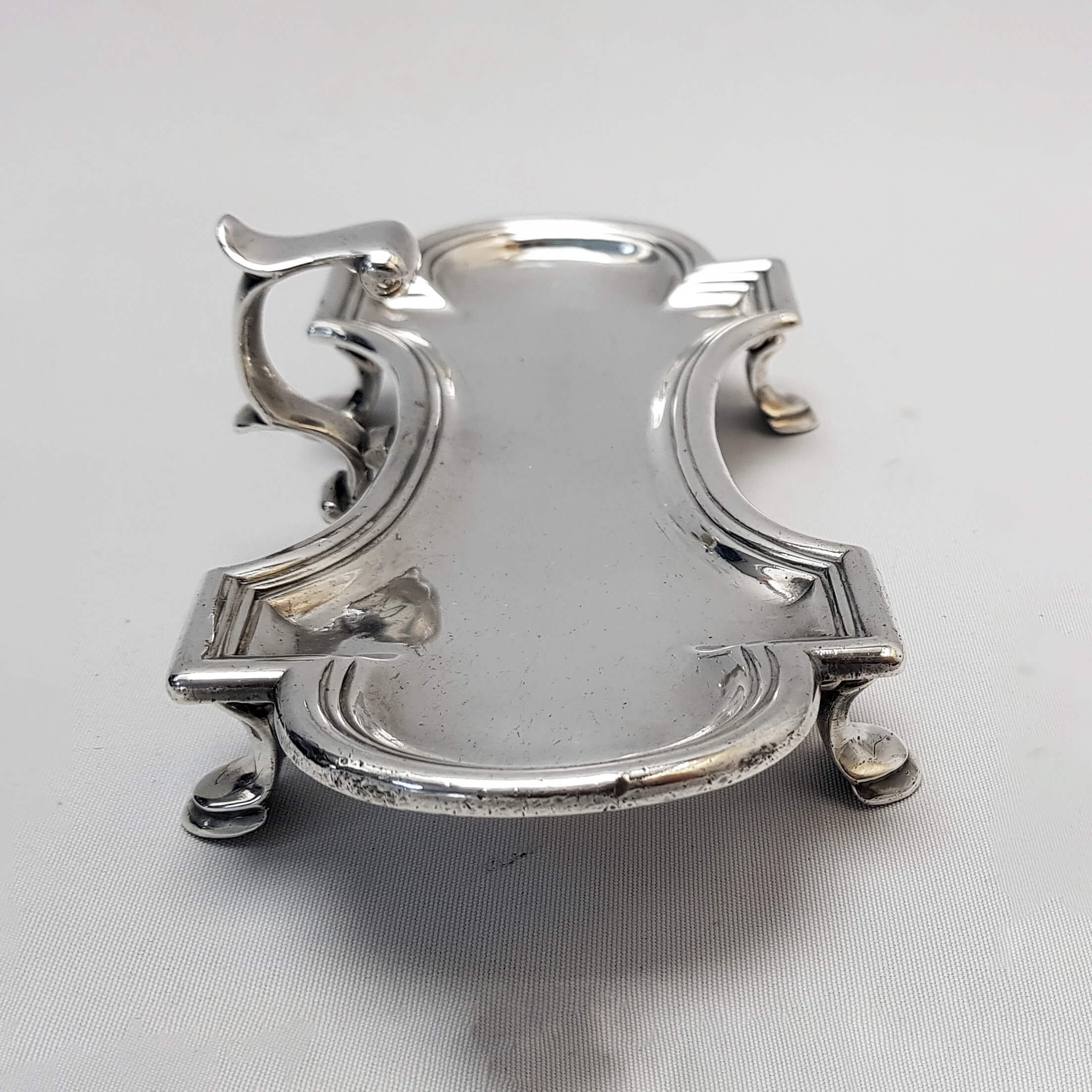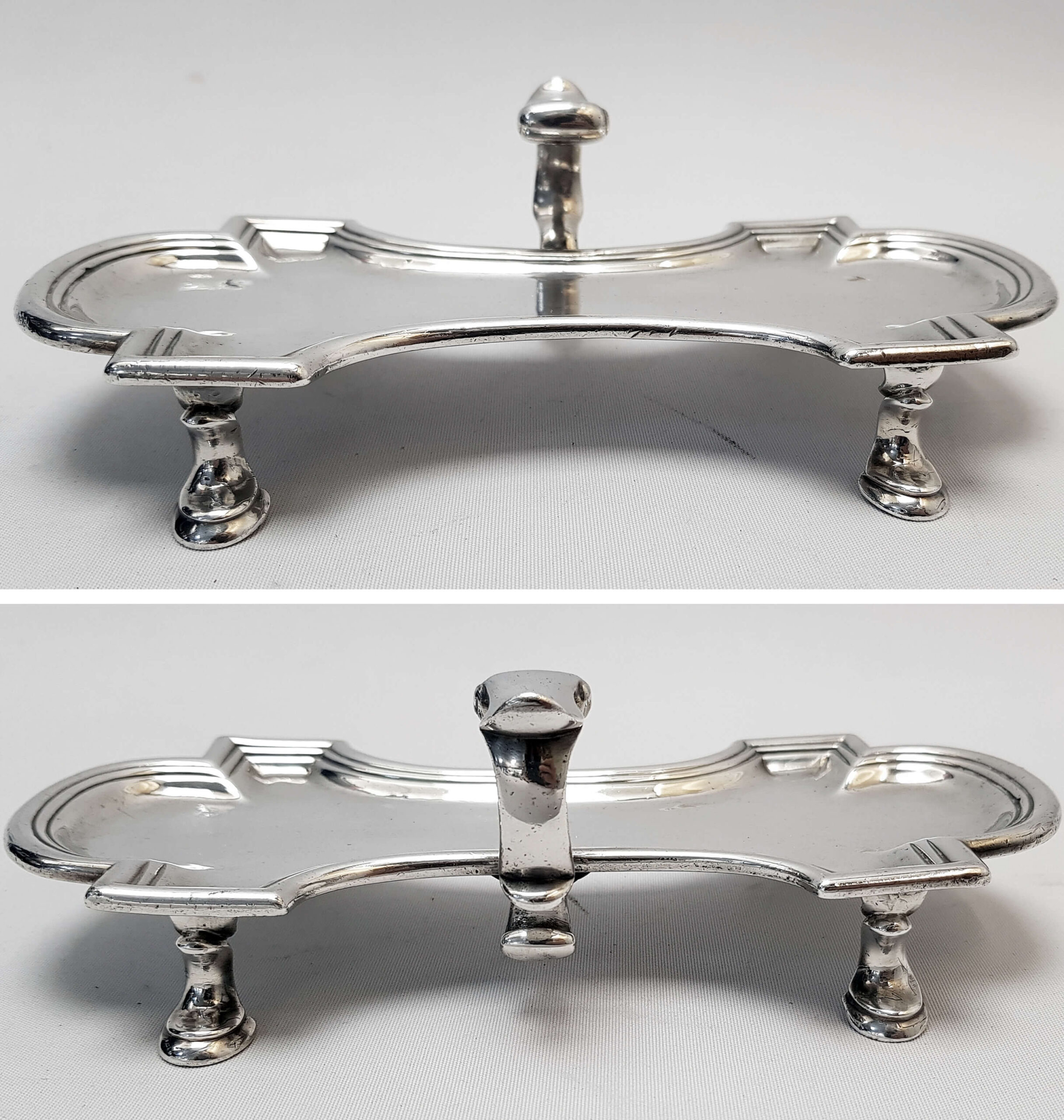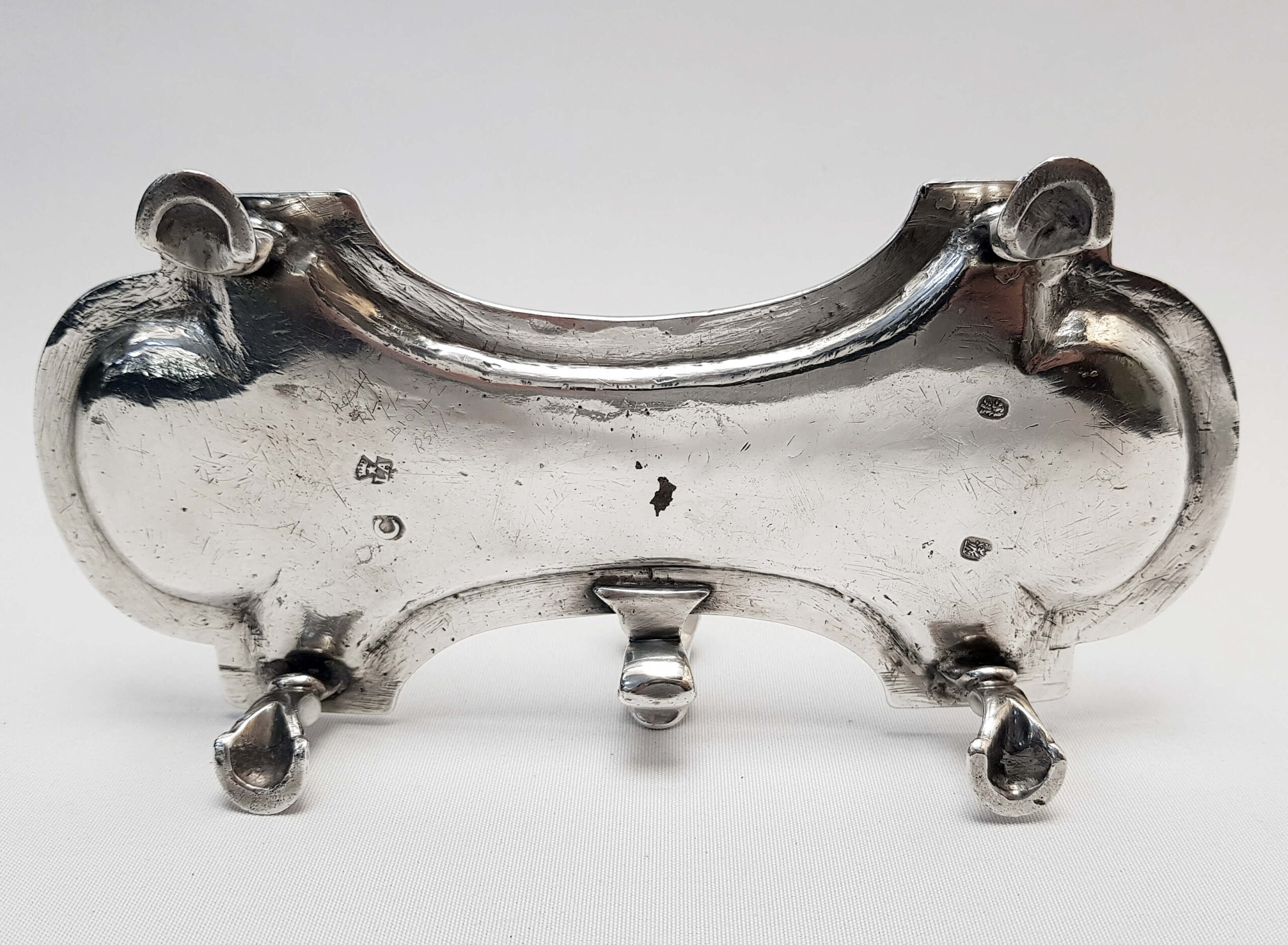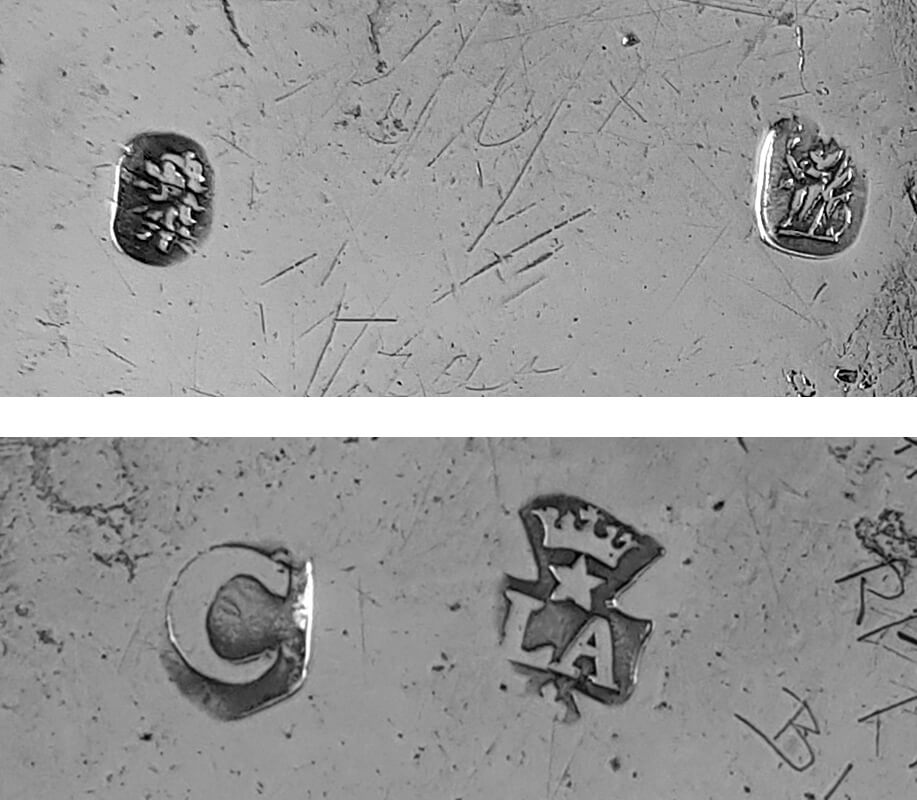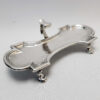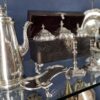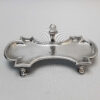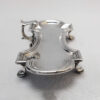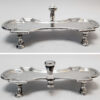George I Antique Silver Snuffer Tray
£7,750
Stock: 10396
Date: 1718
Maker: Paul de Lamerie
Country: England
An antique silver snuffer stand, a good early example by the celebrated Huguenot maker Paul de Lamerie. Of shaped rectangular...
Buy NowEnquireEnquire
×Description
Description
An antique silver snuffer stand, a good early example by the celebrated Huguenot maker Paul de Lamerie. Of shaped rectangular form with curved sides and a central carrying handle. Good plain design and heavy gauge silver typical of this date.
Weight 267g, 8.5 troy oz.
Height 2.7cm/5.6cm (top of handle). Length 18.4cm. Width 8.3cm.
London 1718.
Maker Paul de Lamerie.
Britannia standard silver, 95.8% purity.
Marks. Stamped underneath with a full set of English silver hallmarks.
Provenance. The Alan and Simone Hartman Collection. Sold by Sotheby’s, New York on 17 June 2024.
Literature: Silver Candle Snuffers and Stands. Two different types of candle douters were used to extinguish the flame of a candle. The extinguisher which was a small cone on the end of a long handle and the snuffer which was a dual purpose scissor like tool which could extinguish the candle flame and also cut the wick of the candle for reuse. There were few snuffers made prior to 1700 and by the early nineteenth century more refined candles were introduced which no longer required the wick to be cut. Additional information available at http://www.oldandinteresting.com/tallow-candles-snuffers.aspx. Snuffer trays are usually rectangular or oval shaped and can sometimes be raised on feet or have a carrying handle. Some early stands, called standing snuffers, are shaped like a candlestick with a side carrying handle and a hole at the top where the point of the snuffer scissors is inserted – these were very quickly supeseded by the flat snuffer tray and scissors. It is rare now to find matching snuffers and base. Snuffers and trays were usually made by different specialists so even though the dates match, the makers will probably be different.
Britannia Standard. In 1696, so extensive had become the melting and clipping of coinage that the silversmiths were forbidden to use the sterling standard for their wares, but had to use a new higher standard, 95.8 per cent. New hallmarks were ordered, “the figure of a woman commonly called Britannia” and the lion’s head erased (torn off at the neck) replacing the lion passant and the leopard’s head crowned. This continued until the old standard of 92.5 per cent was restored in 1720. Britannia standard silver still continues to be produced even today.
Condition
This lovely collector's item is in very good, crisp condition.
Maker Information
Maker: Paul de Lamerie
Paul de Lamerie (9 April 1688–1 August 1751). The Victorian and Albert Museum describes him as the "greatest silversmith working in England in the 18th century". Born in Bois-le-Duc, his French Huguenot family chose to follow William of Orange to England during the Glorious Revolution. In August 1703, de Lamerie became the apprentice to a London goldsmith of Huguenot origin, Pierre Platel (1659-1739). De Lamerie opened his own workshop in 1713 (1st mark "LA" - Britannia mark) and was appointed goldsmith to George I in 1716. 2nd mark 1733 - sterling mark). He worked in partnership with Ellis Gamble - formerly apprentice to Master William Hogarth- between 1723 and 1728. His early work is in the simple Queen Anne style, following classical French models, but de Lamerie is noted for his elaborate rococo style of the 1730s, particularly the richly-decorated works of an unidentified craftsman, the Maynard Master. Leaving his first premises in Great Windmill Street he moved to 40 Gerrard Street in 1738. Here he lived and probably had his shop, his workshops being located in one of the 48 properties he owned in the area. His customers included Tsarinas Anna and Catherine, Count Aleksey, Sir Robert Walpole, Benjamin Mildmay (Earl Fitzwalter and Viscount Harwich), the Earl of Ilchester, the Earl of Thanet, Viscount Tyrconnell, the Duke of Bedford, and other members of the English aristocracy. He also worked for King George V of Portugal. One of his productions to the Portuguese Court was a huge solid silver bath tub lost in the great 1755 Lisbon earthquake. A two-handled silver cup and cover by Paul de Lamerie, dated 1720, was among the wedding gifts of Queen Elizabeth II. Paul de Lamerie ranks as one of the stars of England’s finest period of silver. He was the most prolific silversmith of his time and his fame still lives on today.
Our Guarantee
Customer satisfaction is our primary concern
All silverware on our website is checked thoroughly prior to offering it for sale and every product listing contains a condition report and details of the silver hallmarks.
All items offered on our website include:
- Free Shipping Worldwide
- Tracked and Insured
- 14 day no quibble money back guarantee
- We are accredited members of LAPADA and conform to their strict professional standards
- We dispatch 1-3 days after receiving cleared payments
More detailed information about deliveries, returns and how to pay is available in the Help section at the bottom of this page.
